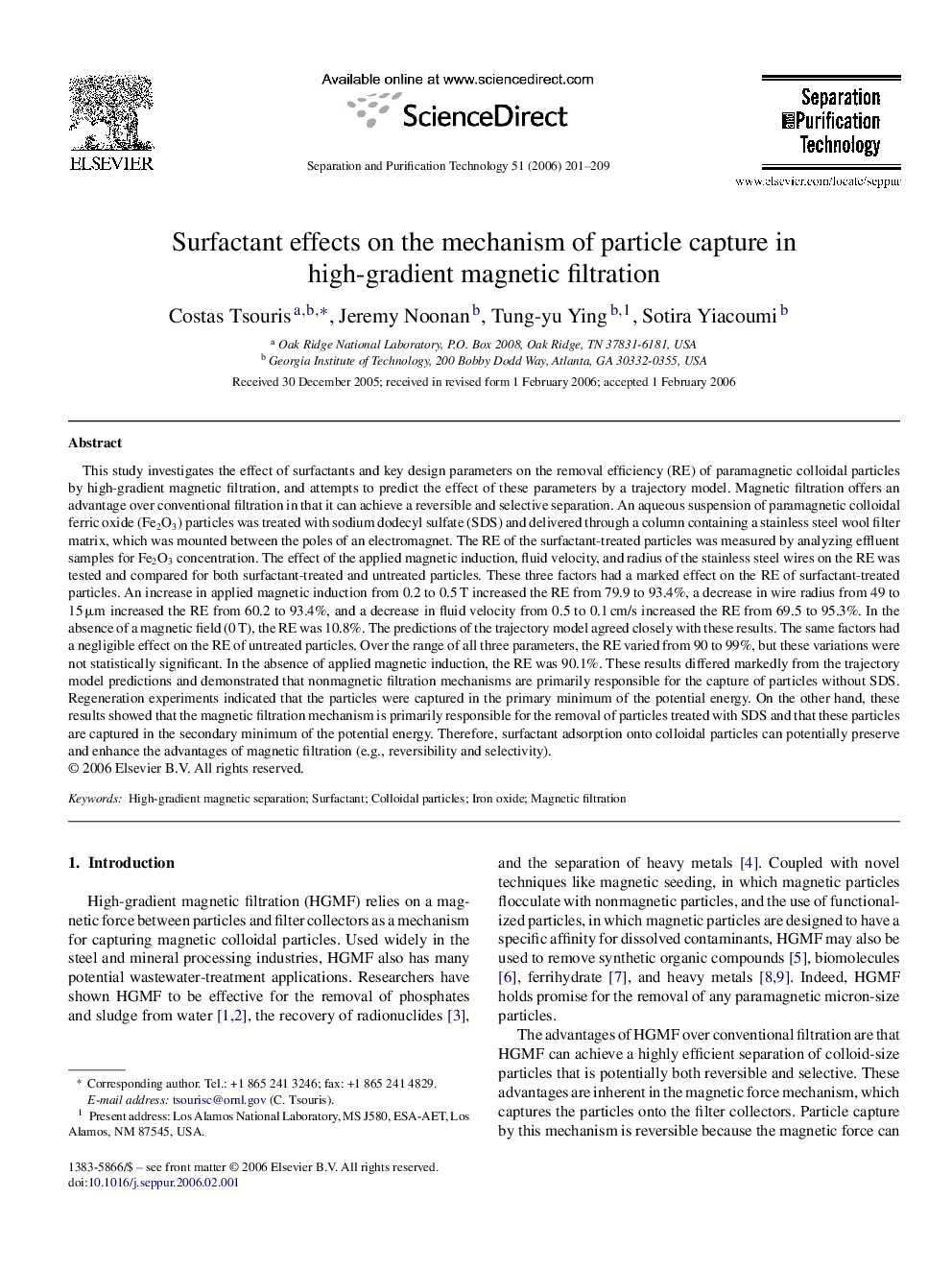| کد مقاله | کد نشریه | سال انتشار | مقاله انگلیسی | نسخه تمام متن |
|---|---|---|---|---|
| 644217 | 884422 | 2006 | 9 صفحه PDF | دانلود رایگان |

This study investigates the effect of surfactants and key design parameters on the removal efficiency (RE) of paramagnetic colloidal particles by high-gradient magnetic filtration, and attempts to predict the effect of these parameters by a trajectory model. Magnetic filtration offers an advantage over conventional filtration in that it can achieve a reversible and selective separation. An aqueous suspension of paramagnetic colloidal ferric oxide (Fe2O3) particles was treated with sodium dodecyl sulfate (SDS) and delivered through a column containing a stainless steel wool filter matrix, which was mounted between the poles of an electromagnet. The RE of the surfactant-treated particles was measured by analyzing effluent samples for Fe2O3 concentration. The effect of the applied magnetic induction, fluid velocity, and radius of the stainless steel wires on the RE was tested and compared for both surfactant-treated and untreated particles. These three factors had a marked effect on the RE of surfactant-treated particles. An increase in applied magnetic induction from 0.2 to 0.5 T increased the RE from 79.9 to 93.4%, a decrease in wire radius from 49 to 15 μm increased the RE from 60.2 to 93.4%, and a decrease in fluid velocity from 0.5 to 0.1 cm/s increased the RE from 69.5 to 95.3%. In the absence of a magnetic field (0 T), the RE was 10.8%. The predictions of the trajectory model agreed closely with these results. The same factors had a negligible effect on the RE of untreated particles. Over the range of all three parameters, the RE varied from 90 to 99%, but these variations were not statistically significant. In the absence of applied magnetic induction, the RE was 90.1%. These results differed markedly from the trajectory model predictions and demonstrated that nonmagnetic filtration mechanisms are primarily responsible for the capture of particles without SDS. Regeneration experiments indicated that the particles were captured in the primary minimum of the potential energy. On the other hand, these results showed that the magnetic filtration mechanism is primarily responsible for the removal of particles treated with SDS and that these particles are captured in the secondary minimum of the potential energy. Therefore, surfactant adsorption onto colloidal particles can potentially preserve and enhance the advantages of magnetic filtration (e.g., reversibility and selectivity).
Journal: Separation and Purification Technology - Volume 51, Issue 2, September 2006, Pages 201–209